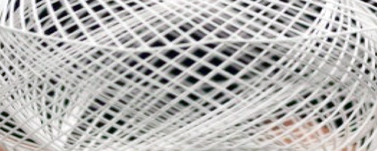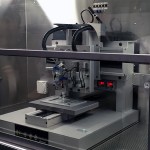3-D printing has revolutionized product customization and digital manufacturing in various industries. In many instances, it is not only faster and less expensive than alternative manufacturing methods, but also numerous types of material can be used to print the products as well, creating endless opportunities to manufacture different products.
The earliest adopters of 3-D printed devices in the healthcare industry include dental labs and hearing aid companies. Now, 3-D printed products have grown to include:
- Medical equipment and surgical tools
- Prosthetic limbs and casts
- Bones and cartilage
- Organs and blood vessels
- Skin and human tissue
- Drugs
Patient-specific orthopedic implants and comfortable customized prosthetics are among the most common 3-D printed medical products. Other 3-D printed products, particularly bioprinted organs and human tissue, are currently in the R&D stage. Future technological advances in 3-D printing have the potential to save many lives. For instance, 3-D printed organs would be an extremely beneficial alternative to long waitlists for organ transplants. 3-D printers can also be easily transported to different locations, potentially enabling access to healthcare in remote locations. In addition, more doctors are using 3-D printed models of patient anatomy to plan and prepare for difficult surgeries.
3-D Printing in Western Countries
More than 85 3-D printed devices have been approved by the FDA. The agency does not have specific requirements for the approval of 3-D printed products in the United States and is currently drafting new guidelines. The guidelines are separated into design and manufacturing considerations, and device testing considerations. Companies need these guidelines in order to identify errors and avoid time-consuming processes before applying for FDA approval. Having new regulations should also encourage companies to invest in developing 3-D printing technology.
Materialise is a leading 3-D printing company in Belgium and has recently requested a unified set of global standards to measure the economic and clinical benefits of 3-D printing. With common guidelines, more hospitals and doctors will incorporate the use of 3-D printing for medical devices and operations. Governments and health insurance companies will be more willing to fund and approve this manufacturing method as well.
At cancer research centers in London, researchers are using 3-D printers to bioprint cancer cells and study the growth and development of tumors. Other companies are currently developing 3-D printed microsurgical products, such as microrobots, to deliver drugs for cancer treatment to targeted areas of the body.
3-D Printing in the Asia-Pacific Region
With the largest patient population in the world, Asia is predicted to have the highest growth potential for 3-D printing over the next few years. The rising awareness of the manufacturing technique’s benefits is leading to both a surge of supportive government policies and investment in 3-D printing R&D for healthcare. Training and research facilities are expanding, along with strategic partnerships between companies and mergers that increase market shares.
In China, the government has dedicated $6.5 million to invest in 3-D printing R&D. Medical researchers in China are currently developing biomaterials and studying 3-D printed organs, skin and drugs. In 2015, the first pediatric 3-D medical research facility in China was opened, with the help of Materialise. Located in Shanghai, the facility is focused on pediatric 3-D modelling and medical imaging, along with finding new clinical ways to use 3-D printing. Medical 3-D printing is beneficial to people of all ages. For example, for young children, doctors can print models of organs to prepare for life-threatening surgeries caused by complex diseases. 3-D models can also be reused to train new cardiologists.
In Fengdu county, the local Chinese government is collaborating with Hkable Biological 3D to build the first 3-D printing factory in China for simple medical products. It will open in early 2017 and will consist of a research center, a 3-D printing center, distribution centers and data processing centers. It will be the first plant in China exclusively dedicated to medical 3-D printing R&D.
South Korea is a leader in 3-D printed medical implants in Asia. In June 2016, Korean doctors successfully completed a 3-D printed heel bone implantation in a patient suffering from a foot tumor. The custom implant allowed the patient to receive treatment within two weeks as opposed to months of waiting for a matching bone tissue donor. Korea is also the first country in the world to approve 3-D printed cranial skull implants.
The Korean government is preparing to offer 3-D printing tax exemptions to R&D companies in order to encourage innovation and economic growth. Nearly 6,000 schools are proposed to receive 3-D printers in 2017 for research purposes. The Ministry of Food and Drug Safety (MFDS) recently announced a fast-track approval plan for doctors to use 3-D printed medical devices in emergency situations. 3-D printed dental implants and joints are potentially eligible for fast-track approval as well.
In Japan, the Ministry of Health, Labor, and Welfare (MHLW) announced that medical insurance will cover the cost of 3-D printed models for surgeons to use when preparing for complex operations. This would not only allow patients to receive a safe and effective treatment, but also allow them to visualize and understand the procedure that will be performed on them. Researchers in Japan have been developing 3-D bioprinted joints, bones, organs and human tissue. So far, they have successfully printed blood vessels, vascular systems, and models of hearts, livers, and brains. They are currently pushing regenerative medicine forward with the hopes of using 3-D printing to produce synthetic human tissue through living cell aggregates. This artificial tissue can be used for skin grafts on burn patients and drug testing. Bioprinting can eventually lead to generating organs from the existing living cells of patients. The Japanese government is also trying to bring 3-D printers into schools by incorporating them into education and research in Japanese universities.
In Australia, a patient with a spinal tumor went through a successful surgery to implant the first 3-D printed, custom titanium vertebrae in the world. The surgeon printed models of the patient’s anatomy to practice the surgery before operating. Not only can 3-D printing manufacture bones and joints on-demand, but in the near future, it will also enable the bioprinting of a patient’s cells and growing bones and organs rather than using materials like titanium.
From making low-cost patient-specific medical devices, to preparing for safer, more effective medical procedures, 3-D printing will only continue to become a vital part of healthcare as more doctors adopt it. However, while there are many benefits to 3-D printing, it is important to note that the manufacturing method is only time and cost-efficient if device companies and/or hospitals already own the expensive printer systems. They also need a skilled team of trained experts to operate the printers. Facilities will need to be constantly updated, and process control will need to be regulated.
Researchers are continuing to study biodegradable materials and soon enough, bioprinting will be available to consumers. Companies are developing 3-D scanners that will allow consumers to scan objects in 3-D at home. Pharmaceutical 3-D printing is growing in prospect, too. Researchers seek to produce single pills that contain numerous drugs that release at different times in order to personalize drugs for individual patient needs, lower the cost of drugs, and increase access to medicine. 3-D printing has truly transformed the healthcare industry, and companies around the world, especially in Asia, are racing to develop new 3-D printing technology.







